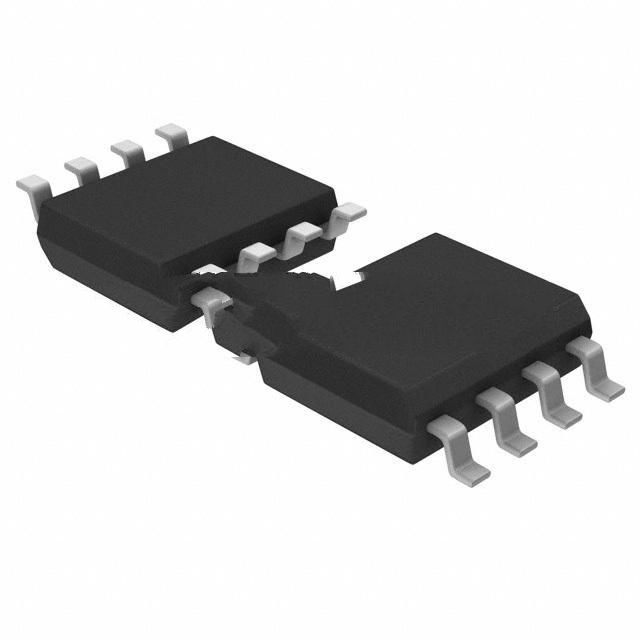SN75452BPSRE4 Product Introduction:
Texas Instruments Part Number SN75452BPSRE4(PMIC - Gate Drivers), developed and manufactured by Texas Instruments, distributed globally by Jinftry. We distribute various electronic components from world-renowned brands and provide one-stop services, making us a trusted global electronic component distributor.
SN75452BPSRE4 is one of the part numbers distributed by Jinftry, and you can learn about its specifications/configurations, package/case, Datasheet, and other information here. Electronic components are affected by supply and demand, and prices fluctuate frequently. If you have a demand, please do not hesitate to send us an RFQ or email us immediately sales@jinftry.com Please inquire about the real-time unit price, Data Code, Lead time, payment terms, and any other information you would like to know. We will do our best to provide you with a quotation and reply as soon as possible.
Introducing the Texas Instruments SN75452BPSRE4, a versatile and high-performance quadruple half-H driver. This integrated circuit is designed to provide efficient and reliable motor control for a wide range of applications. With its exceptional features and robust design, the SN75452BPSRE4 is the perfect choice for engineers and hobbyists alike.
One of the key features of the SN75452BPSRE4 is its ability to drive up to four DC motors or two stepper motors with ease. It can handle a wide range of motor voltages, from 4.5V to 36V, making it suitable for a variety of applications. The built-in protection features, such as thermal shutdown and overcurrent protection, ensure the safety and longevity of the motor and the driver itself.
The SN75452BPSRE4 also offers a high output current capability of up to 1A per channel, allowing for efficient and powerful motor control. Its low output saturation voltage ensures minimal power loss and maximum motor performance. Additionally, the device is designed to be compatible with standard TTL and CMOS logic levels, making it easy to integrate into existing systems.
This versatile driver finds applications in various fields, including robotics, automation, automotive, and industrial control systems. Whether you are building a robot, controlling a conveyor belt, or designing a CNC machine, the SN75452BPSRE4 is the ideal choice for precise and reliable motor control.
In conclusion, the Texas Instruments SN75452BPSRE4 is a high-performance quadruple half-H driver that offers exceptional features and reliability. Its wide range of applications and robust design make it a must-have for any motor control project.
Gate Drivers are circuits specifically designed to enhance and control the gate signals of a MOSFET or IGBT. It receives low-voltage and low-current signals from the controller and converts them into high-voltage and high-current pulse signals that directly act on the gate of the MOSFET or IGBT, thus achieving accurate control of these semiconductor switching devices. Grid drivers have become an indispensable part of modern power electronic systems because of their high efficiency in signal conversion and stable driving performance.
Application
Gate Drivers have been widely used in various fields of power electronics technology. In the motor control system, the gate driver is used to drive the MOSFET or IGBT switching components of the inverter to achieve accurate control and efficient operation of the motor, which is widely used in the fields of electric vehicles, industrial automation equipment and household appliances. In power inverters, the gate driver is responsible for converting DC power to AC power to meet the needs of various loads, commonly seen in solar photovoltaic systems, wind power systems and uninterruptible power supplies (UPS). In addition, gate drivers also play an important role in many fields such as switching power supplies, AC frequency converters, and power electronic converters.
FAQ about PMIC - Gate Drivers
-
1. What is an active gate driver?
An active gate driver is a circuit that is mainly used to enhance the gate signal of a field effect transistor (MOSFET) or an insulated gate bipolar transistor (IGBT) so that the controller can better control the operation of these semiconductor switches. It controls the gate of MOSFET or IGBT by converting the signal output by the controller into high-voltage, high-current pulses, thereby improving the performance, reliability and service life of these devices.
-
2. What is a motor gate driver?
A motor gate driver is a circuit that is mainly used to enhance the gate signal of a field effect transistor (MOSFET) or an insulated gate bipolar transistor (IGBT) so that the controller can better control the operation of these semiconductor switches. It converts the low-voltage signal output by the controller into a high-voltage, high-current pulse signal to ensure that the MOSFET or IGBT can switch states stably and quickly within its operating range.
-
3. What is the difference between MOSFET and IGBT gate drivers?
The gate drivers of MOSFET and IGBT have significant differences in drive voltage, drive current, and drive mode.
Drive Voltage and Drive Current
MOSFET: The gate drive voltage of MOSFET is low, usually between 10V and 20V. Due to its structural characteristics, the driving current of MOSFET is also relatively small, which is suitable for using a smaller driving circuit.
IGBT: The gate driving voltage of IGBT is relatively high, usually between 15V and 20V. Due to its composite structure, IGBT requires a large driving current to control its conduction and cutoff, and usually requires a special driving circuit to provide sufficient driving power.
Driving method
MOSFET: The switching speed of MOSFET is very fast and suitable for high-frequency applications. Its driving method is relatively simple, and the gate can be directly controlled by voltage to achieve fast switching action.
IGBT: The switching speed of IGBT is slow and suitable for low-frequency applications. Due to its composite structure, IGBT requires a larger driving current and a more complex driving circuit to ensure its stable operation. IGBT usually requires positive and negative voltages to control its conduction and cutoff, especially when it is turned off, a negative voltage is required to eliminate the current tailing effect.
 Lead free / RoHS Compliant
Lead free / RoHS Compliant






























